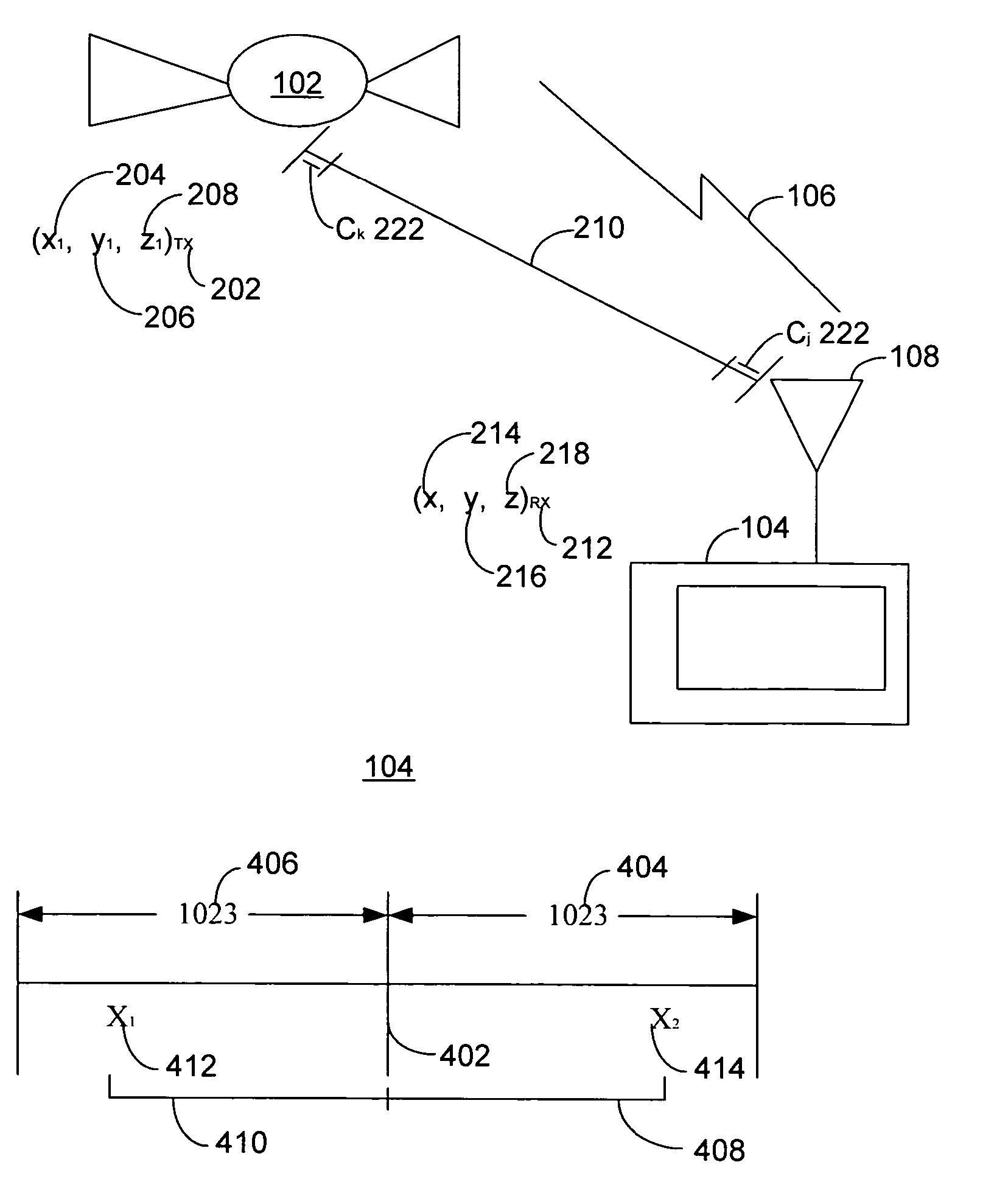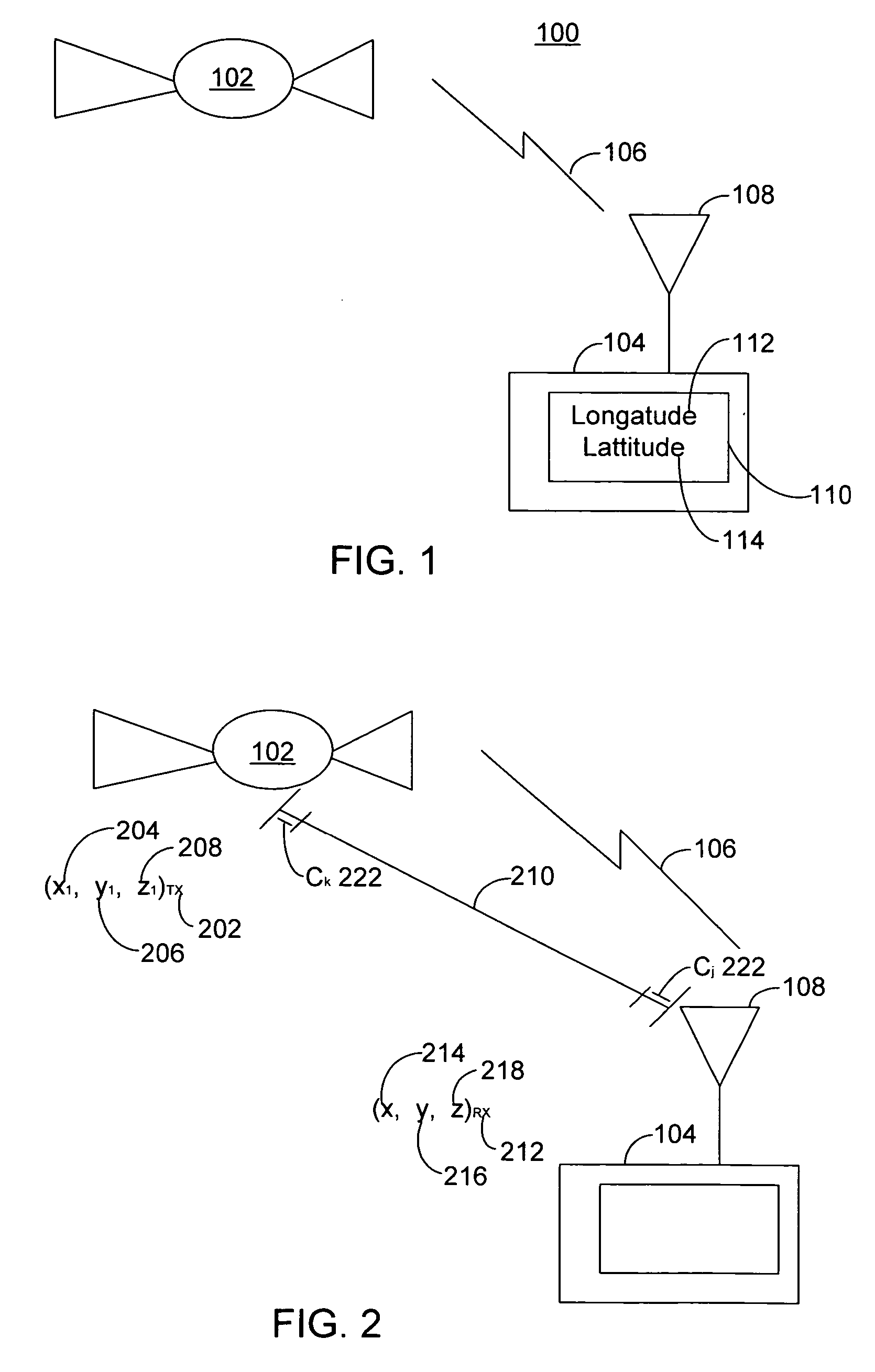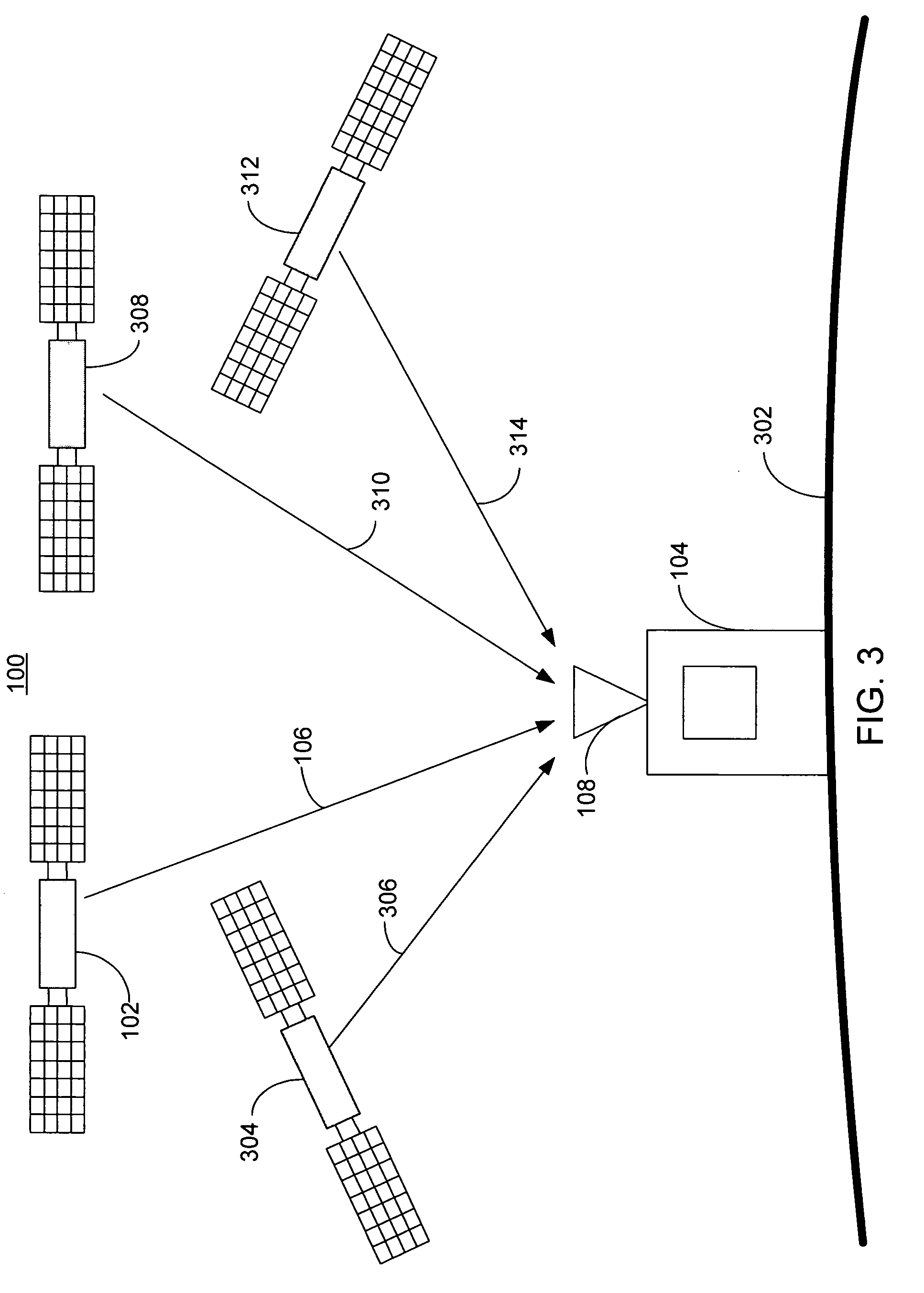Fast reacquisition of a GPS signal
a technology of gps signal and reacquisition, applied in the field of protocols, can solve the problems of reducing the signal strength of gps satellites, affecting the accuracy of gps position determination, and now the dominant time delay, so as to avoid the penalty of always on power consumption and save time
- Summary
- Abstract
- Description
- Claims
- Application Information
AI Technical Summary
Benefits of technology
Problems solved by technology
Method used
Image
Examples
Embodiment Construction
[0027]In FIG. 1, a global positing satellite (GPS) system 100 with a single satellite 102 and a single GPS receiver 104 is illustrated. The satellite 102 communicates with a GPS receiver 104 over a radio frequency (RF) GPS signal 106 that is received by GPS receiver 104 at antenna 108. Upon communication with four satellites (only one is shown in the illustration), the GPS receiver 104 calculates a position and time; for example, it may display latitude 112, longitude 114, altitude, and time.
[0028]In FIG. 2, the satellite 102 and the GPS receiver 104 of FIG. 1 at a range 210 of approximately 11,000 nautical miles is shown. The range 210 is not a constant distance because the satellite 102 circles the Earth in its orbit approximately twice per day as the earth turns on its axis once per day. The satellite 102 transmits a spread spectrum GPS signal 106 to the GPS receiver 104. The GPS signal 106 contains a data sequence imposed on the spread spectrum signal. The data sequence comprise...
PUM
 Login to View More
Login to View More Abstract
Description
Claims
Application Information
 Login to View More
Login to View More - R&D
- Intellectual Property
- Life Sciences
- Materials
- Tech Scout
- Unparalleled Data Quality
- Higher Quality Content
- 60% Fewer Hallucinations
Browse by: Latest US Patents, China's latest patents, Technical Efficacy Thesaurus, Application Domain, Technology Topic, Popular Technical Reports.
© 2025 PatSnap. All rights reserved.Legal|Privacy policy|Modern Slavery Act Transparency Statement|Sitemap|About US| Contact US: help@patsnap.com



